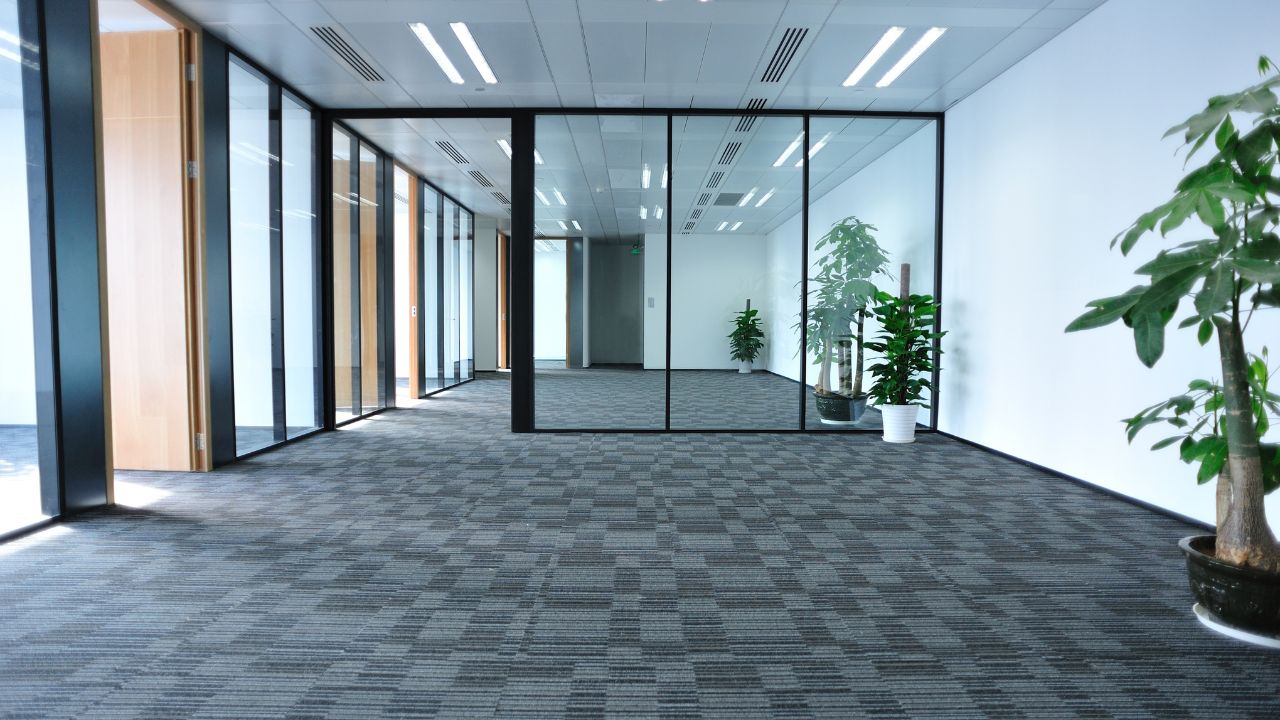Safety glass is popular among architects, building professionals, and planners because it allows them to create striking designs while maintaining safety.
Developed for glass features such as flooring, doors and staircases, safety glass is suitable for various commercial and domestic applications.
This guide will explore the benefits, applications and considerations of safety glass in design. Keep reading to get inspired on ways to use glass applications in your next project.
What is safety glass?
Safety glass refers to glass units specifically designed to adhere to British Standard Regulations (2010) and maintain safety in commercial or domestic settings.
In most cases, safety glass can be processed in two ways: toughening or laminating. Toughened glass is processed by heating it to a high temperature and then rapidly cooling it to increase its strength. In contrast, laminated safety glass has two layers of glass with a specialised interlayer to keep the glass shards contained in case it breaks.
At SGP, we work with Trofisol SentryGlas, an interlayer five times stronger and up to 100 times more rigid than conventional laminating material. We incorporate this specialised interlayer when producing safety glass units, giving glass superior structural capabilities for various applications, including glass balustrades and partitions.
Anti-slip glass is specifically designed to increase friction to stop users from slipping when walking over or stepping on the glass. Similar to safety glass, this can be used for walk-on glass or glass stair treads to decrease the chance of injury. We are proud stockists of ‘Dream’ and Punto Anti-Slip glass, and we can process these to your exact measurements. Discover more about each product here.
When processing safety glass, manufacturers must ensure precision to help their clients comply with building regulations. Our team has a wealth of knowledge about working on bespoke projects and use a range of machinery, such as our automated cutting machine, to ensure our glass is tailored to your precise measurements.
Other applications, such as fire-proof glass and bomb-proof glass, have their own specific standards but can provide additional safety and security for a building.
Safety glass standards UK
According to British Standard Regulations 2010 (Document K), safety glass must be fitted in all glazed areas lower than 800 millimetres from the ground or in any of the listed ‘critical locations’.
In addition, if a glass panel has a width of less than 250 millimetres, laminated glass or six-millimetre annealed glass rather than toughened glass can be used in place of safety glass.
There are six named “critical locations” which are considered to have a significant possibility of injury caused by broken glass. These are:
- Glazing in doors where the glass is within 1,500 millimetres of the floor,
- Door-adjacent glazing where windows or side panels are within 300 millimetres of the door edge,
- Low-level glazing: this covers any glazing other than windows or doors that are within 800 millimetres of the floor,
- Bathroom areas: Due to the risk of slipping into the glass, for example, a glass shower screen,
- Protective barriers such as glass balconies and balustrades (either inside or outside the property),
- Furniture: This covers tables, cabinets, shelves, trolleys and mirrors (both wall-hung and free-standing).
In any of these critical locations, glass must comply with one of the following statements to be considered safety glass:
- It must break safely,
- Glazing must be either robust or in small panes,
- Be covered by a permanent screen to prevent a sphere of 75mm from impacting the glazing.
There are also regulations (Requirement K5.1) which are set out to prevent people from potentially colliding with open windows, skylights or ventilators. For instance, the projecting parts of any windows, skylights and ventilators must not come into contact with people moving in and around the building.
Applications of safety glass for domestic properties
Domestic building projects, such as rental properties or new developments, require safety glass in line with building regulations for certain features. Construction and architectural companies can incorporate glass features in a safe way while still experimenting with style and creating a modern aesthetic.
Toughened or laminated safety glass can be incorporated in domestic glass staircases as these fall within the “Protective barriers” section of critical locations. Safety glass can also be utilised in staircase balustrading to create a secure yet showstopping feature.
 We recently supplied toughened balustrading for this domestic project, with some panels delivered within 24 hours. These all fell under building regulation guidelines.
We recently supplied toughened balustrading for this domestic project, with some panels delivered within 24 hours. These all fell under building regulation guidelines.
In addition, safety glass should be used within any structural glazing in a residential bathroom, such as glass shower doors, frosted privacy screens, or skylights. These glass features also allow more natural light into the room, which is ideal for downstairs or en-suite bathrooms, which tend to be smaller.
By utilising structural safety glass, construction professionals can maximise profits by creating a bright and airy feel to the home. Experimenting with stylised safety glass features, such as glass shelving, cabinets or internal doors, helps create a modern design to attract buyers, especially those looking for a more established property to move into.
Applications of safety glass for commercial properties
Commercial properties, including office buildings and retail settings, should also incorporate safety glass to keep workers and customers safe.
For retail settings, safety glass can be used within shopfronts and display cabinets to avoid injury if they are accidentally damaged. Safety glass also provides additional security benefits as it is more durable than single-paned glass, which can help protect stock from robbery.
By preventing accidental or purposeful damage, retailers can feel financial benefits as they will need to replace their glass shopfonts and cabinets less often.The use of large glass safety panels can also creates an inviting feel, which could being additional repeat business and foster a sense of enjoyment for customers.
Toughened or laminated safety glass should also be used in office spaces if the glass is within 1,500 millimetres of the floor, as per the British Standard regulations. Adding an additional safety glass door, window, partition or wall can also help to maximise the natural light in the office space, which benefits employees and supports their productivity.
Other types of specialist glass in building design
Utilising specialist application glass in building design can help achieve additional benefits such as noise control or energy efficiency.
Energy-efficient glass can improve a building’s sustainability by reflecting heat back into it. In this way, buildings will require less air conditioning in summer, reducing energy bills and improving the comfort of those living or working within. Energy-efficient glass can also contribute to a Net Zero construction project, as the building will require less electricity to keep rooms at a comfortable temperature.
Soundproofing glass, or acoustic glass, is designed to minimise sound transfer. This is ideal for external windows on residential buildings or commercial office spaces to keep sound levels comfortable for residents, especially in busy city areas. In addition, acoustic glass can be used internally to create private sections within the main space of the building, perhaps for confidential meetings or to allow users to concentrate for maximum efficiency at work.
 We recently supplied acoustic glass for an office project in London to maintain comfortable acoustics and areas of privacy.
We recently supplied acoustic glass for an office project in London to maintain comfortable acoustics and areas of privacy.
In addition, curved safety glass can be used throughout buildings to create unique and eye-catching structural glass features. At SGP, we can bend toughened glass units up to 3200mm in width and 5000mm in height to suit a range of project requirements.
How SGP can support your next project
We can help you follow safety glass regulations for your next domestic or commercial project or provide a safety glass replacement if required. We are happy to consult with team members to decide on the appropriate size of your glass panels and offer bespoke safety glass cutting to your preferred size and shape.
Our friendly team is also here to discuss other specialist applications, discussed above, and can help you decide on the best choice for your project.
For more glass design hints and tips, check out our blog and our recent case studies.



